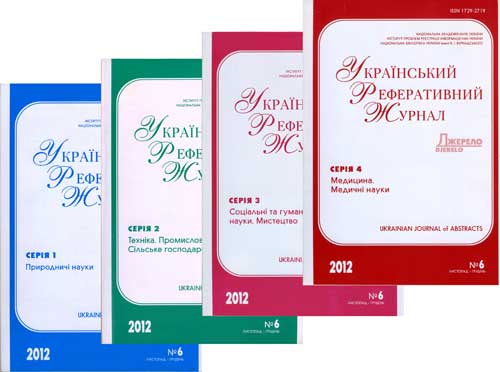РЕФЕРАТИВНА БАЗА ДАНИХ "УКРАЇНІКА НАУКОВА"
Abstract database «Ukrainica Scientific»
Бази даних
Реферативна база даних - результати пошуку
|
|
Пошуковий запит: (<.>ID=REF-0000143749<.>) | |||
|
Загальна кількість знайдених документів : 1 |
|||
Zholos A. V. Muscarinic cholinergic excitation of smooth muscle: signal transduction and single cationic channel properties / A. V. Zholos, V. V. Tsvilovskyy, T. B. Bolton // Нейрофизиология. - 2003. - 35, № 3-4. - С. 311-329. - Библиогр.: 105 назв. - англ. Acetylcholine, the principal neurotransmitter of the parasympathetic nervous system, evokes smooth muscle excitation and contraction by acting at the muscarinic receptors, which in many tissues, including the gastrointestinal tract, are comprised of the <$E roman M sub 2> and <$E roman M sub 3> subtypes. The opening of ion channels selective for monovalent cations (e.g., <$E roman Na sup +> and <$E roman K sup +>) is the major mechanism of cholinergic excitation. We have studied signal transduction pathways and single cationic channel properties using patch-clamp recording and <$E roman Ca sup 2+> imaging techniques in guinea-pig single ileal myocytes. Cationic channels were found to couple to both <$E roman M sub 2> and <$E roman M sub 3> receptors via the GTP-bound <$E roman G sub omicron alpha> and phospholipase C activation, respectively. When these primarily signaling links are established, cationic channel opening can be further potentiated by membrane depolarization and an increase in the intracellular <$E roman Ca sup 2+> concentration. Strong synergism exists between the receptor occupancy by the agonist and intrinsic voltage dependence of the current as the former can effectively modulate the voltage range of cationic channel activation, while membrane depolarization produces a strong sensitizing effect. However, at potentials close to 0 mV ion flux is terminated by channel flickery block, while further depolarization induces long-lasting channel inactivation. Channel flicker is not caused by intracellular <$E roman Mg sup 2+>, polyamines, or any other freely diffusible molecule and is confined to potentials around 0 mV irrespective of the driving force. Thus, it appears to be an intrinsic channel property of physiological importance, as it improves conditions for the action potential discharge and propagation. Similarly, intracellular <$E roman Ca sup 2+>-dependent facilitation of channel opening is counteracted by a slower desensitization. Further most intriguing negative control was discovered in the experiments whereby all cellular G proteins were non-selectively and persistently activated by GTP<$E gamma>S infusion in which case, over time, carbachol instead of activation caused strong and almost irreversible inhibition of the cationic current. In cell-attached and outside-out membrane patches exposed to 50 <$E mu>M carbachol or 200 <$E mu>M internal GTP<$E gamma>S, the activity of three types of cationic channels was observed. They had dissimilar conductance (10, 50, and 130 pS), voltage dependence, and kinetics. The properties of the 50 pS channel are consistent with the whole-cell current behavior, at least when <$E [ roman Ca sup 2+ ] sub i> is "clamped" at 100 nM. The voltage-independent component of the cationic conductance, which appears at higher levels of <$E [ roman Ca sup 2+ ] sub i>, is likely mediated by the 130 pS channel, while the role of the 10 pS channel is at present unclear. Thus, smooth muscle cationic channels can uniquely detect and integrate many most important physiological signals, such as the active conformation of two different muscarinic receptors, their associated G proteins and enzymes, as well as the membrane potential and <$E [ roman Ca sup 2+ ] sub i> levels. Moreover, some signals act in synergy, while most of them depending on the intensity can be either stimulatory or inhibitory. Ключ. слова: smooth muscle myocytes, patch clamp, cationic channels, muscarinic receptors, G proteins, carbachol Індекс рубрикатора НБУВ: Е60*738.821*112.6 Рубрики: Шифр НБУВ: Ж61875 Пошук видання у каталогах НБУВ | |||
| Національна бібліотека України імені В. І. Вернадського |
 |
| Відділ наукового формування національних реферативних ресурсів |
 |
| Інститут проблем реєстрації інформації НАН України |
Всі права захищені © Національна бібліотека України імені В. І. Вернадського